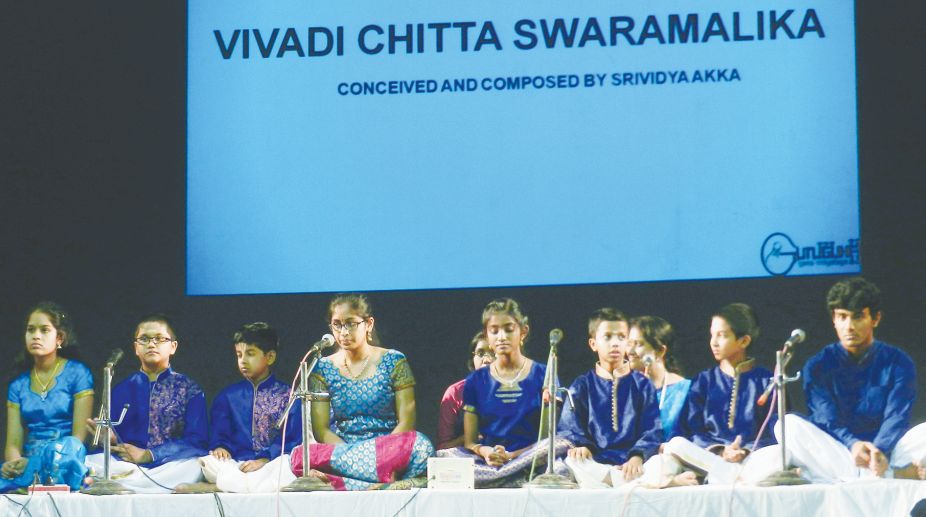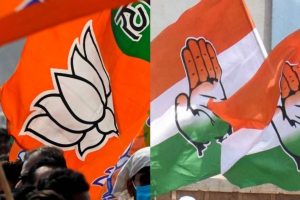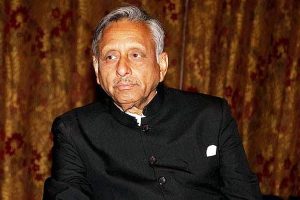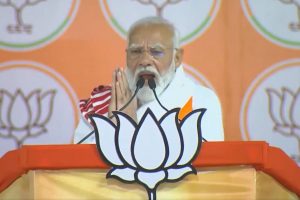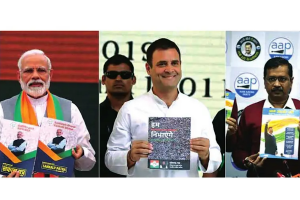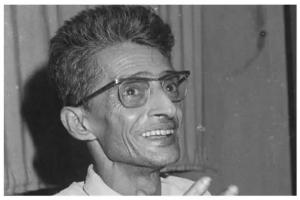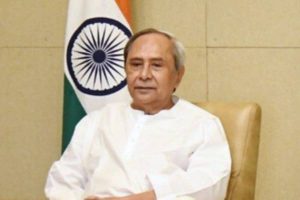Sri Guruguha Gana Vidyalaya under the aegis of its students’ wing, Guruguha Sangeeth Sammelan, celebrated the Jayanti Utsavam of Sri Muthuswami Dikshitar. The two day fest at Uttam Mancha focused on the theme, “Divya Vivadi Dhwani” and began on the tithi nakshatra (Krittika) of Sri Dikshitar this year.
Dikshitar composed in all the 72 melakarta ragas; 40 of which are Vivadi melas. The Vivadi ragas take vivadi or the dissonant notes (R3 G1 D3N1). In the mela-raga chakra scheme consisting of 12 chakras of six ragas each, the first, sixth, seventh and 12th chakras are all vivadi (total 4×6=24 ragas).
Also to be noted is that Dikshitar followed the Asampoorna mela paddhati as propounded by Venkatamakhin having Kanakambari Rasamanjari nomenclature. Most of these Vivadi mela-raga kritis were composed by Dikshitar in Thanjavur kshetra.
Advertisement
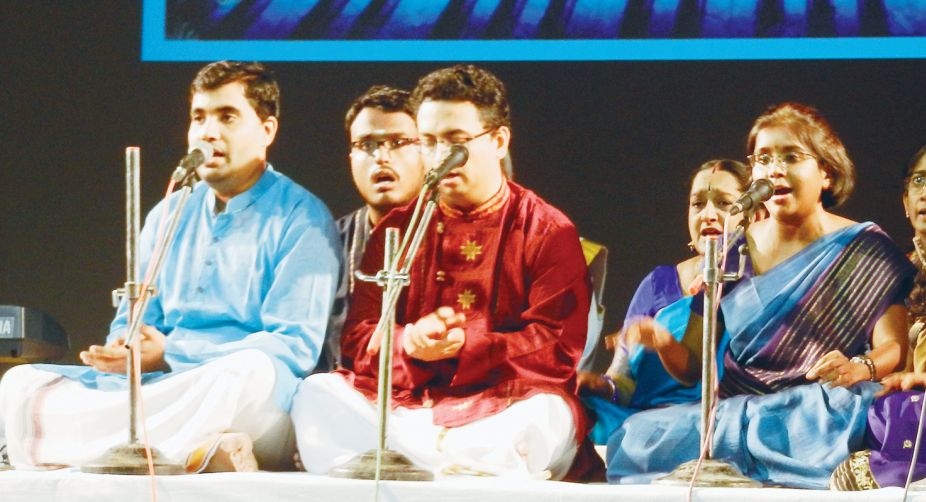
The mammoth project of meticulously teaching the Vivadi mela-raga kritis to the students was undertaken by Guru A Srividya. For the students it was a kind of challenge as well as it demands sustained training of the ears to the “dissonant” notes.
As an icing on the cake, she also taught the young students, the Chittaswara (solfa phrases), exclusively composed by her for the programme, for all the 40 ragas. Moreover, the senior students were taught by the Guru to sing manodharma kalpana swaras without compromising on the asampoorna paddhati.
The allocation of the kritis among the students and the distribution during the presentation was planned meticulously to bring about the aesthetics of the entire Vivadi structure.
The kritis, sung by Lalita Krishnamurthy, P Aravindan, J Atul Ranganath, K Gayatri, Brinda Radhakrishnan, S Kavita, K Neela, S Krithika, KR Ramakrishnan, Ravi Shankar Narayan, V Deepa, KK Mukund and V Kushaj were beautiful. The children who brilliantly sang the Chittaswaram passages were Akshaya, Venkatanathan, Shreyas, Chinmayee, Akash, Anush, Deepa and Ravishankar.
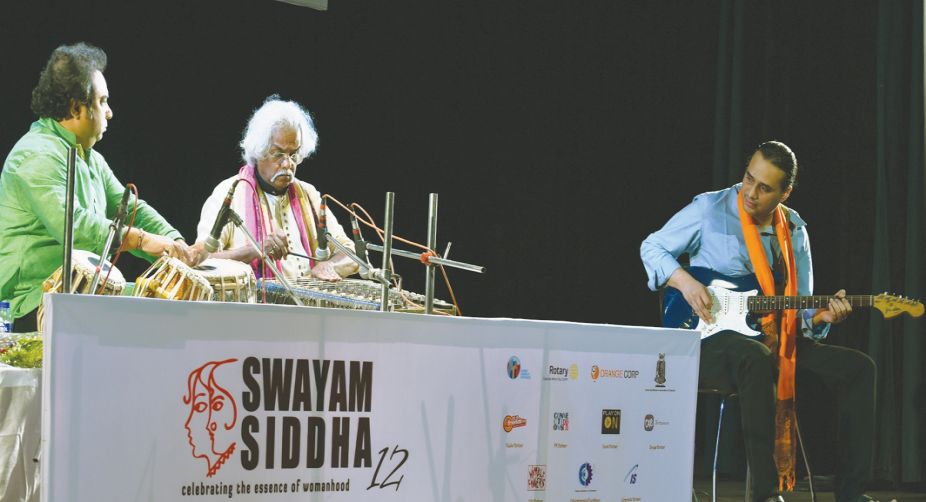
Jayanta Chatterjee (flute), S Ranganathan (violin), J Atul Ranganath (keyboard), PV Sairam (kanjira), S Venkatraman and Aravind Davay (mridangam) provided wonderful support to all.
Debajyoti Mishra, music director and Ravi Srinivasan, former executive director ITC SRA were guests of honor. GV Subramanian, director Bharatiya Vidya Bhawan, supporter of the event, felicitated the guests.
The programme began with the rendering of the choicest of Dikshitar kritis in group and concluded with Mangalam kritis. The Rangolis and décor were inviting and matched the grand occasion. One learnt a lot from this Carnatic musical, full, as it was, with erudition and substance.
Conservatorium
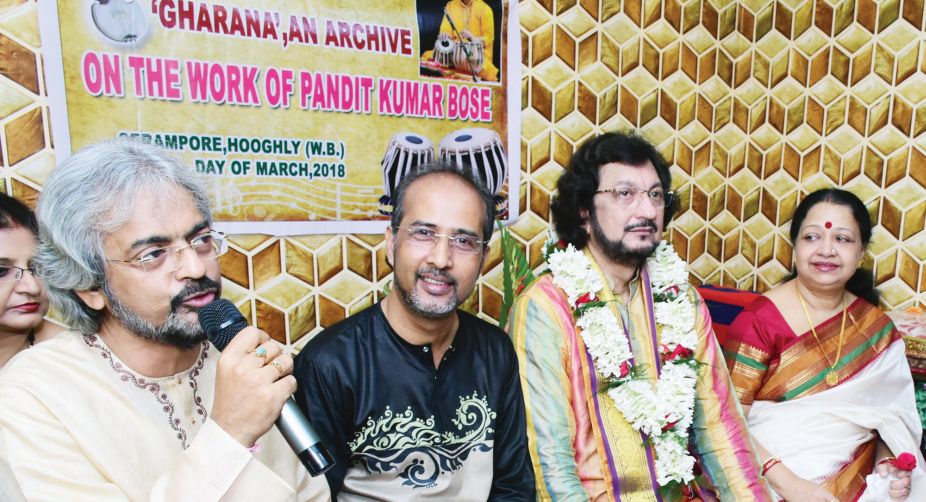
Ramen Das, a diehard fan of Pandit Kumar Bose, had been collecting every article and object associated with the life, works and concerts of his mentor since the 1990s.
The outcome of this passion further inspired him to display his collection in an official archive or conservatory; and he started working on these lines two years back.
Since then the family of Pandit Bose has also contributed a huge number of articles, which include his regular essentials, kurtas worn on historical concerts and several other things. And thus the Pandit Kumar Bose Conservatorium took shape.
This conservatory, located in 15 A, Barabagan Lane, Shibtala (near Tarun Sangha Club), Serampore, Hooghly, West Bengal, was inaugurated recently with a grand celebration.
On this auspicious occasion Rohen Bose, nephew and disciple of Pandit Kumar Bose, offered his tabla solo recital. Supported by Pankaj Mishra’s melodious sarangi, he ventured out to cover all the characteristics of Banaras Gharana.
He also played several rare compositions of his guru with élan and enthralled listeners. That was followed by a sarod recital of Pandit Debojyoti Bose, youngest brother of Kumar ji and father of Rohen.
Beginning with a beautiful Ragesree Alaap he played gatkaris in medium and fast paced teentaal, superbly supported by Parimal Chakraborty’s perceptive tabla. His next was Shuddh Basant before the concluding dhun.
Nostalgic anecdotes and evocative music made the evening a memorable one. The conservatory will be open on Thursdays and Sundays for public viewing. Any research-oriented works in this regard are negotiable.
Celebrating womanhood
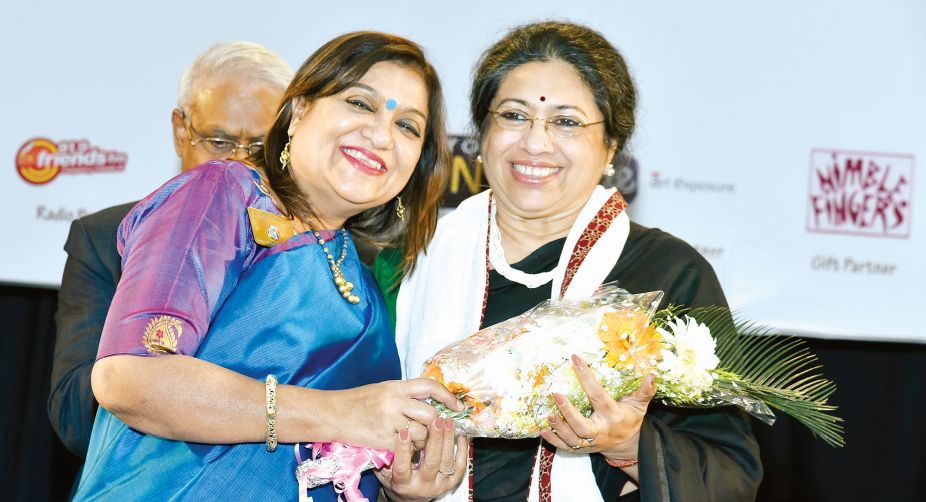
Rotary Club of Calcutta Metro City, in association with The University Women’s Association of Calcutta and Orange Corp, organised the 12th edition of SwayamSiddha at the Satyajit Ray Auditorium to acknowledge the brilliance of iconic women.
The recipients of the award this year included Kanta Chakraborty (social activist running a school for homeless orphans and street children at Dum Dum Railway Station), Sharmeela Chatterjee (entrepreneur who rose from the grass root level and now has an agency supplying manpower across continents), Nandini Chakravorty (mining industry entrepreneur), Ekta Bhattacharjee (creative designer and visual artist), Madhumanti Maitra ( voice artist and elocutionist) and Tanusree Shankar (performing artist and choreographer).
Former Swayam Siddha recipients such as Agnimitra Paul, Sanchita Bhattacharya and Jolly Chanda attended the event. The felicitation was followed by an enthralling musical with santoor maestro Tarun Bhattacharya, percussion guru Prodyut Mukherjee and guitarist Vikramjit “Tuki” Banerjee on stage.
Advertisement

